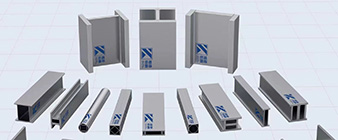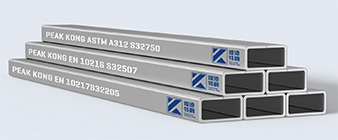Chemical composition:
– Nickel (Ni): 20-24%
– Chromium (Cr): 19-23%
– Molybdenum (Mo): 4-5%
– Copper (Cu): 1-2%
– Carbon (C): ≤0.020%
– Silicon (Si): ≤1.0%
– Manganese (Mn): ≤2.0%
– Phosphorus (P): ≤0.045%
– Sulfur (S): ≤0.035%
– Tensile strength: approximately 520-720 MPa (75,000-104,000 psi) – Yield strength: approximately 240-310 MPa (35,000-45,000 psi) – Elongation: usually about 40% (50 mm) – Hardness: generally about 200-220 HB (Brinnell hardness)
– Density: approx. 8.0 g/cm3
– Thermal conductivity: about 16.3 W/m·K
– Specific heat capacity: about 500 J/kg·K
– Melting point: approx. 1390-1450 °C (2534-2642 °F)
Corrosion Resistance: – Excellent resistance to pitting, crevice corrosion and stress corrosion cracking, especially in chloride-rich and acidic environments.
Weldability: – Using standard welding technology, it has good weldability; suitable for various manufacturing methods.
Formability: -Easy to be formed into various hollow shapes and has a wide range of uses.
1. Chemical processing: used in storage tanks, piping systems and structural supports in chemical plants, especially for handling corrosive substances.
2. Marine industry: Due to its excellent seawater corrosion resistance, it is very suitable for shipbuilding, offshore platforms and marine equipment.
3. Oil and Gas: Used in the construction of pipelines, refineries and drilling rigs, where durability and tolerance to harsh environments are critical.
4. Pharmaceutical industry: suitable for manufacturing equipment, storage tanks and pipeline systems with high hygiene and corrosion resistance requirements.
5. Food processing: Equipment and structures used in the food and beverage industry to ensure compliance with hygiene standards and prevent contamination.
6. Architectural applications: Structural elements and aesthetic features used in modern architectural designs, such as railings and facades.
7. Power generation: used in power plant parts, especially areas exposed to corrosive environments.
8. Construction: Used in building frames and supports, especially in environments where corrosion resistance is critical.
-
 2024-9-29 Alloy 602 CA / 2.4633/N06025 Nickel-based alloy hollow structural profiles
2024-9-29 Alloy 602 CA / 2.4633/N06025 Nickel-based alloy hollow structural profiles -
 2024-9-25 1.459 Super Stainless Steel Structural Profiles
2024-9-25 1.459 Super Stainless Steel Structural Profiles -
 2024-4-15 BS EN 10088-3 chemical composition tables
2024-4-15 BS EN 10088-3 chemical composition tables -
 2024-9-19 1.4462 stainless steel structural hollow Sections
2024-9-19 1.4462 stainless steel structural hollow Sections -
 2024-9-15 Weathering steel H-shaped steel
2024-9-15 Weathering steel H-shaped steel -
 2024-9-25 1.4301 Stainless steel hollow structural profiles
2024-9-25 1.4301 Stainless steel hollow structural profiles -
2024-9-20 Applications of Ti Gr 1 / 3.7025 structural profiles



